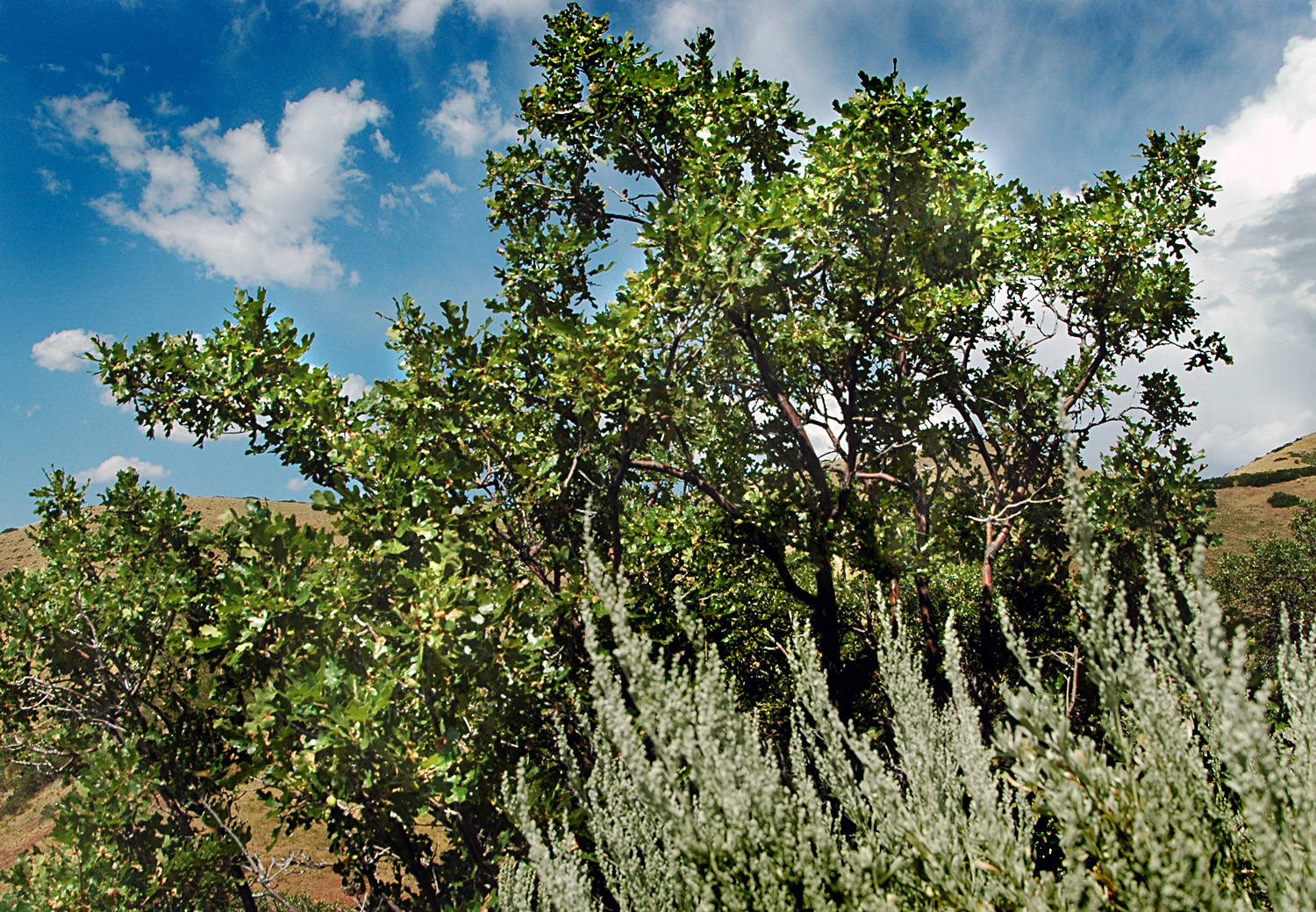- Gambel oak
Taxobox
name = Gambel oak

image_width = 240px
regnum =Plant ae
divisio = Magnoliophyta
classis =Magnoliopsida
ordo =Fagales
familia =Fagaceae
genus = "Quercus"
sectio = "Quercus"
species = "Q. gambelii"
binomial = "Quercus gambelii"
binomial_authority = Nutt.Gambel Oak ("Quercus gambelii") is a
deciduous smalltree or largeshrub widespread in the foothills and lower mountain elevations of the central southwesternUnited States and northwesternMexico . It typically grows at altitudes of 1,000–3,000 meters above sea level, where precipitation averages between 30–60 centimeters (12 to 24 inches) per year. It is often called scrub oak, oak brush or white oak.Gambel Oak varies significantly in size from one location to another. The average mature height is from 3 to 9 meters (10–30 ft), but occasionally reaches heights of 18 meters (60 ft) in some locations. Dwarf stands of plants under one meter (39 in) tall are common in marginal areas where heavy browsing occurs. The plant reproduces from
acorns , but spreads most rapidly from root sprouts that grow from vast underground structures calledlignotuber s. These reproductive characteristics often result in dense groves or thickets of the trees that often cover entire mountainsides.Although Gambel Oak wood is hard and dense, its branches are irregular and crooked, making them flexible enough to bend without breaking when covered with heavy snow. The
bark is rough and brownish-gray. The leaves are generally 7–12 cm (3–5 inches) long and 4–6 cm broad, deeply lobed on each side of the central vein; the upper surface is glossy dark green, the undersurface is paler and velvety. They frequently turn orange and yellow during autumn, creating mountainsides of vivid colors. Theflower s are inconspicuous unisexualcatkins that occur in the spring. Theacorn s are 1–2 centimeters (0.75 in) long, and about one-third to one-half enclosed by a cap or cup (cupule ); they mature in September, turning from green to golden brown.Habitat
Gambel oak flourishes in full sun on hillsides with thin, rocky, alkaline soil where competition from other plant species is limited. It also does well in richer soils, but in those areas it is forced to compete for growing room. It is well-adapted to locations where wet springs and hot, dry summers create conditions conducive to wildfires. After a fire, gamble oak quickly re-establishes itself from root spouts. The plant is also quite drought tolerant.
Because of its abundance, gambel oak is an important food source for browsing animals like
deer andlivestock . Acorns are frequently gathered by squirrels and stored for winter food. Some insects depend on the gambel oak; for example, theColorado Hairstreak Butterfly uses it as a food source for caterpillars. Historically, acorns from gambel oak provided a reliable source of food for Native Americans.Associated plant species include
Chokecherry ,Arrowleaf balsamroot ,Bigtooth Maple ,Mountain-mahogany ,Ponderosa Pine andServiceberry . Associated birds and mammals includeWestern Scrub Jay ,Black-billed Magpie ,grouse ,deer ,chipmunks andsquirrels .Gambel oak was named after the American naturalist
William Gambel (1823–1849).References
* [http://www.efloras.org/florataxon.aspx?flora_id=1&taxon_id=233501032 Flora of North America: "Quercus gambelii"]
Wikimedia Foundation. 2010.
